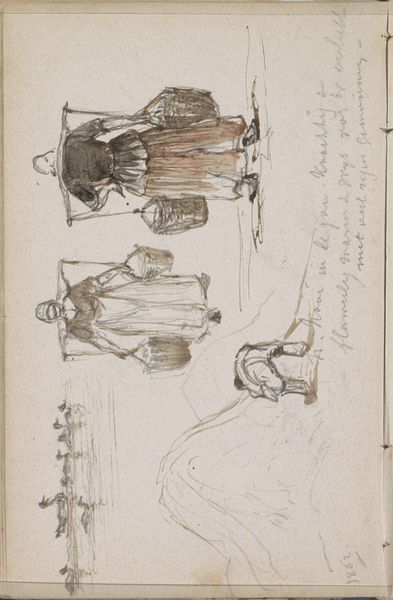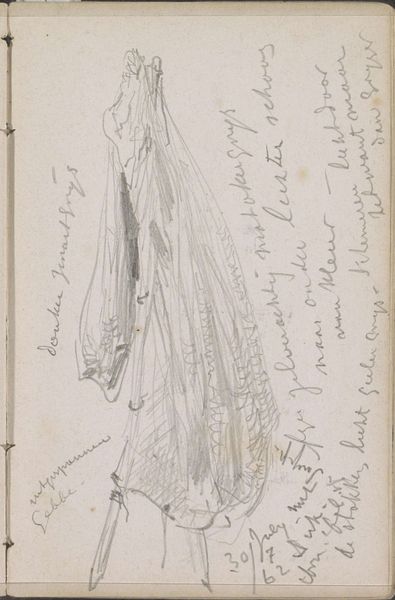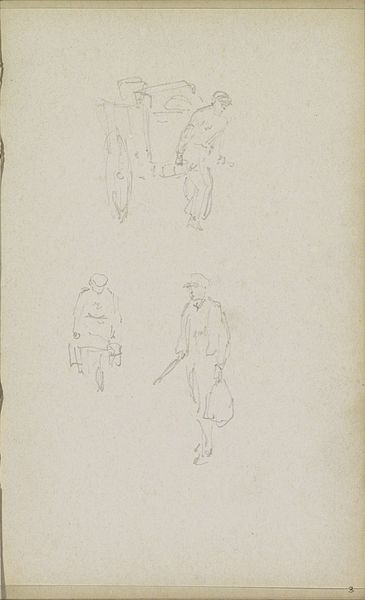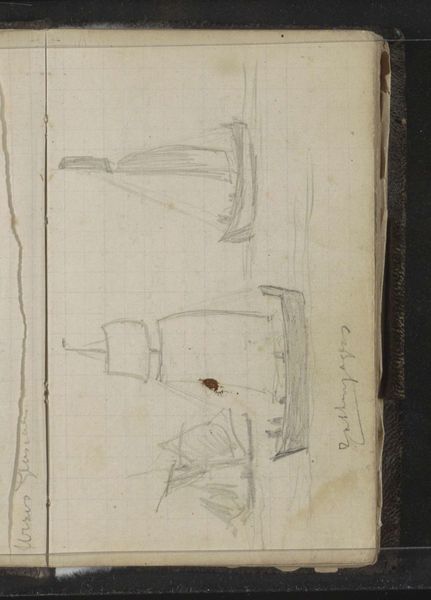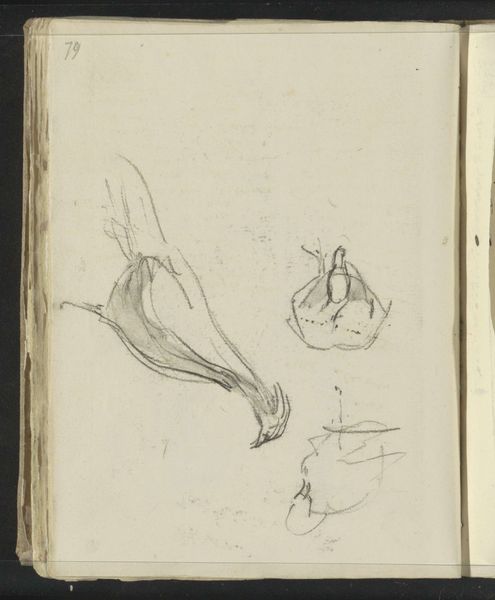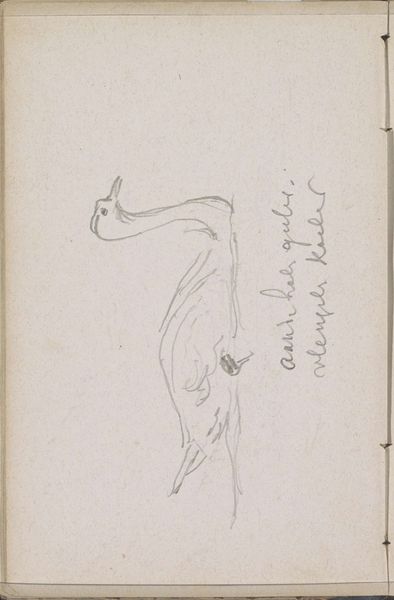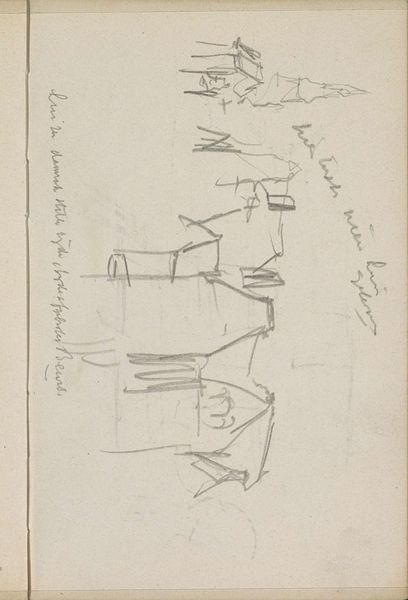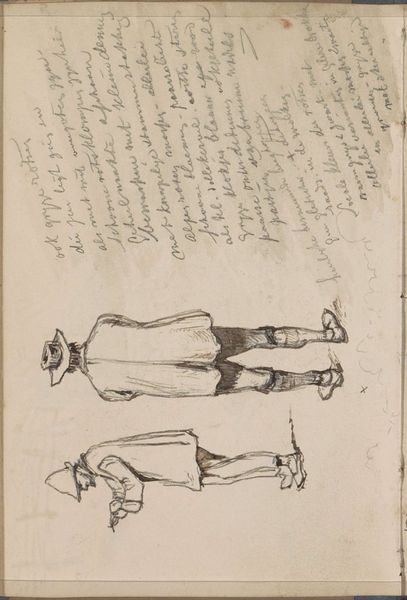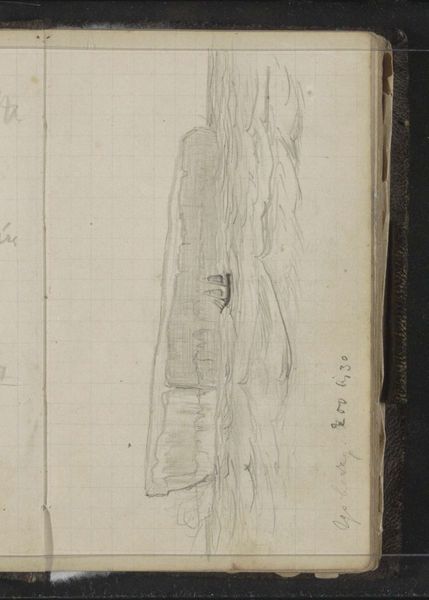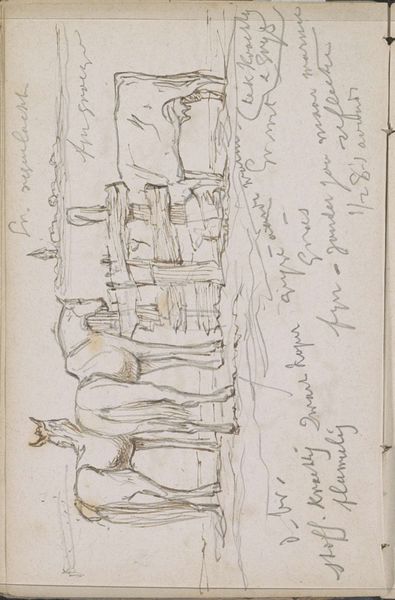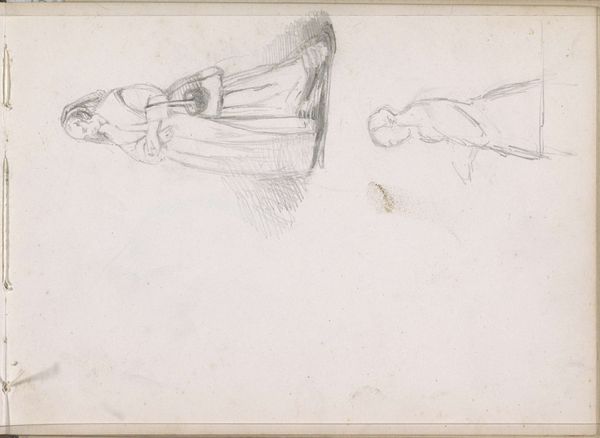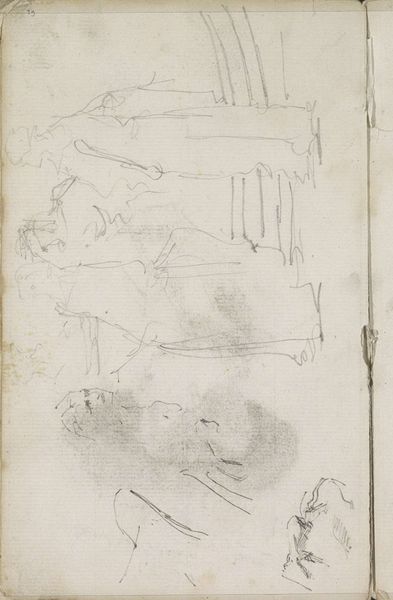
#
amateur sketch
#
toned paper
#
light pencil work
#
pencil sketch
#
incomplete sketchy
#
personal sketchbook
#
ink drawing experimentation
#
sketchbook drawing
#
sketchbook art
#
watercolor
Copyright: Rijks Museum: Open Domain
Curator: This sheet of sketches by Johannes Tavenraat, dating from around 1862-1864, offers us a glimpse into the artist's observational practice. The Rijksmuseum holds this intriguing piece, titled "Waterdraagster en een koe" – or, Water Carrier and a Cow. Editor: My initial reaction is a quiet sort of fondness. It's almost melancholic in its simplicity, isn't it? The light pencil work and toned paper give it this faded, dreamlike quality, like a half-remembered pastoral scene. Curator: Absolutely, there's a delicacy there. Given Tavenraat’s position in the Dutch art scene, his works resonate within a social context dominated by rural life and emerging industrialization, positioning him as a chronicler of both labor and landscape. Note that each figure’s rendered on what looks like one page from the artist’s notebook; could the cow maybe be allegorical, representing burden and perseverance, mirrored in the water carrier’s daily labor? Editor: That’s compelling. Maybe the sketches together evoke the reliance on agrarian modes that prevailed during that epoch. In this way, we are urged to question the conditions impacting the lives of laboring populations. Are the sketches political? I feel an urge to place such a representation on a sociopolitical timeline. Curator: Well, these rapid impressions are from an era when artists started documenting ordinary lives, turning towards everyday experiences rather than idealised narratives. Maybe it’s about seeing beauty and meaning in the mundane. Notice the economy of line? Tavenraat captures form and volume with just a few strokes. And it’s the imperfections, the slightly incomplete feel, that makes it so immediate. It’s about capturing the fleeting essence, that ephemeral ‘vibe’ of rural life. Editor: I wonder about the gaze itself though, too, considering what and who we frame as ordinary subjects worthy of representation in our narratives about landscape and community, the history of work… this seemingly unassuming drawing speaks volumes when viewed in relationship to socio-political frameworks of representation. Curator: It's lovely how you pull the wider issues into focus like that. For me, I just love the intimacy. These works can remind me of the subtle art in watching, observing—of finding significance in our ordinary surroundings and circumstances. Editor: Yes, maybe finding solidarity with the woman through art helps us confront some serious disparities that still need correcting today. It's all about continuing to strive for fair representation.
Comments
No comments
Be the first to comment and join the conversation on the ultimate creative platform.
